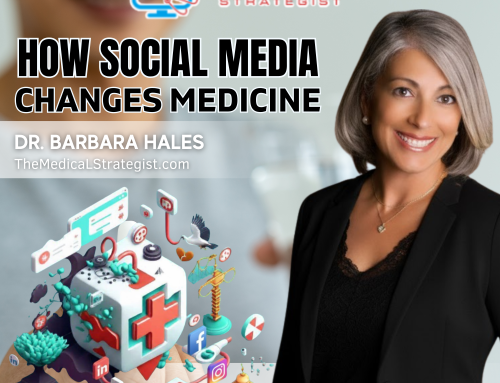Podcast: Play in new window | Download
Subscribe: RSS
In this episode, Dr. Barbara Hales discuss:
- What steps can medical providers take to monitor and support high-risk patients, such as those with chronic conditions, during the shift to standard time
- How can medical offices effectively communicate the time change to their patients to minimize confusion and missed appointments
- What strategies can medical offices implement to support their staff during the transition to standard time
Key Takeaways:
“Being mindful of these impacts and preparing patients and staff in advance can help medical offices minimize disruptions and maintain high-quality care during the shift from daylight savings to standard time.” – Dr. Barbara Hales.
Connect with Barbara Hales:
Twitter: @DrBarbaraHales
Facebook: facebook.com/theMedicalStrategist
Business website: www.TheMedicalStrategist.com
Show website: www.MarketingTipsForDoctors.com
Email: info@TheMedicalStrategist.com
YouTube: TheMedicalStrategist
LinkedIn: www.linkedin.com/in/barbarahales
Books:
Content Copy Made Easy
14 Tactics to Triple Sales
Power to the Patient: The Medical Strategist
TRANSCRIPTION: (176)
Dr. Barbara Hales: Welcome to another episode of Marketing Tips for Doctors. This is going to be a short one, but what we will be talking about today is addressing the fact that there will be a time change this weekend, which, for most people, really is not an adjustment. For others, it is a big deal for them. So, let’s discuss this for a moment.
Impact of Daylight Saving Time on Medical Practices
The shift from Daylight Savings Time to Standard Time, which we’re doing this weekend, can impact medical offices, patient attendance, and overall medical care in several ways. This can be extreme regarding patient attendance and no-show rates because people don’t have the right time on their clocks. There are disruptive sleep patterns. So, at the end of daylight savings time, patients’ sleep schedules can be disturbed, especially among those who are already sleep-deprived, leading to increased no-show or late arrival rates.
Also you’re bound to get some missed appointments. Patients may misinterpret the time change or forget to adjust their schedules, leading to confusion and possible missed appointments.
In terms of staff scheduling challenges, an adjustment needs to be done. The time shift can affect the medical office staff as well, particularly those who may need time to adjust to new schedule, which can impact punctuality and productivity.
There’s increased stress and burnout. Studies have found increased risk of stress and reduced alertness associated with the time change, which can especially impact frontline healthcare workers and those with back-to-back shifts. There’s also an impact on patient health and care quality itself.
Increased Emergency Visits and Mental Health Impact
For chronic conditions, the time shift may exacerbate symptoms for patients with chronic health conditions. For example, changes in sleep and circadian rhythm can worsen issues for those with cardiovascular disease, depression, or anxiety. In terms of medication adherence, the hour shift can disrupt medication timing, especially for patients on tightly scheduled doses. Reminding patients to adjust their medication schedules accordingly can mitigate this risk.
For emergency department and acute care visits, an increase in medical emergencies does happen. Studies indicate a slight increase in incidences like strokes and heart attacks following time changes due to stress and sleep disruption.
There’s an impact on mental health services as well. The shift to shorter daylight hours and standard time often aligns with Seasonal Affective Disorders, their symptoms as well, which can increase demand for mental health care and support.
There are potential strategies for medical offices to counteract this. There should be clear communication. Send reminders about appointment times before and after the shift. This can help reduce confusion. You might want to remind patients more than you typically remind them for office hours so that a week ahead of time, two days beforehand, the night before and even the morning of will be very helpful, and will also cut down on no-shows.
In terms of flexible scheduling, offer more flexible appointment hours during the first week after the time change. This could improve both staff productivity and patient adherence. Monitor high-risk patients, extra attention to patients with known heart disease, sleep disorders, and mental health conditions can reduce adverse outcomes during this transition period.
In short, being mindful of these impacts and preparing patients and staff in advance can help medical offices minimize disruptions and maintain high-quality care during the shift from daylight savings to standard time. And for those of you living in areas for which there will be a time change, don’t forget to set your clock. This has been another episode of Marketing Tips for Doctors with your host, Dr. Barbara Hales. Till next time.



